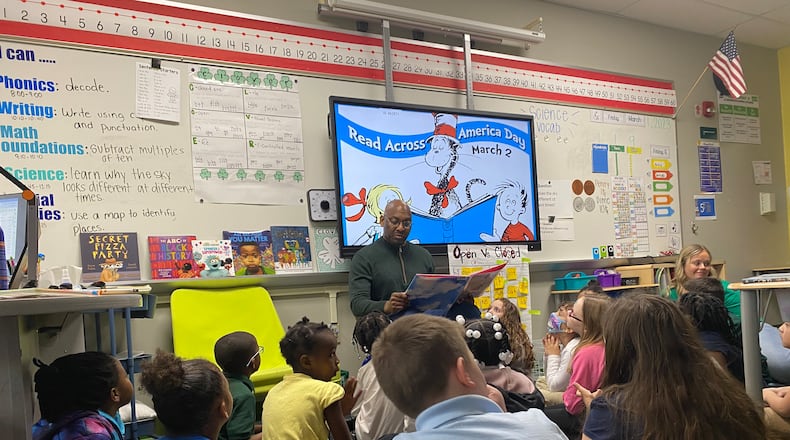Private school enrollment rose by 6,484 students between 2018-2019 and the 2023-2024 school year, according to the Fordham analysis, and homeschooling rose by 14,581 students between 2018-19 and 2022-23 (data isn’t available yet for this school year.)
Aaron Churchill, Ohio policy research director for Fordham, who did the analysis, said during the peak of the pandemic, charter schools held off on expanding school seats. That’s now changed.
“The charter school operators are starting to think about expanding capacity now that they have additional dollars to support their programs,” Churchill said.
He pointed to new charter schools that opened in Cincinnati and Columbus as potentially adding to the population changes in those two cities.
David Lawrence, Dayton Public Schools superintendent, has been talking about getting DPS enrollment back up since first taking the interim position this past summer. Part of that would include attracting students currently attending charter schools and private schools.
Dayton has roughly 20,000 school-aged kids. Recent Ohio Department of Education data shows about 12,000 of those go to Dayton Public. The rest attend charter or private schools or are homeschooled.
When Lawrence attended Dayton Public Schools, the district had 11 high schools and significantly more students. While the overall Dayton population has declined since then, Lawrence said DPS “deserves a win.”
He said as the region is expected to grow again with an influx of new technology jobs, the district needs to prepare students to work in those jobs.
“Why not bring those families back?” Lawrence said. “Then when they come back, why not offer a high-caliber education, experiential education in the public schools to prepare the kids for this region’s growth that we see in the future?”
He plans to bring students back with good customer service — he says the district is looking into Disney’s customer service methods for use at DPS — as well as improving opportunities like field trips that offer kids a different educational experience.
Recently, the district brought students to a CareFlight experience with Premier Health, which Lawrence saw as a different type of educational learning opportunity. Instead of sitting in a classroom and doing the assessments, the students saw how the emergency room worked and talked to trauma flight nurses — something he said the kids will not forget easily.
Lawrence said the district was “on our way” to doubling the number of field trips from last school year to this one.
“Again, as we increase our capacity to provide two things, high quality experiences and education, and that that Disney level of customer service, then people will come,” Lawrence said.
Churchill and Lawrence both said they feel there is room for high-quality public and charter schools, and that a sense of competition is a good thing.
Churchill said Fordham has heard from charter school families that they are often looking for a sense of safety and belonging. For some families, a focus on academics is also important.
“The charter school model has always been designed to try to create a space for more innovation and specialization,” Churchill said.
According to Churchill’s analysis, Dayton’s charter and public school populations are steadier than other Ohio cities.
In Cincinnati Public Schools, between the 2018-2019 school year and the 2023-2024 school year, Churchill calculated a 22.5% increase in charter school enrollment, while public school enrollment declined by 4.3%. In Columbus City Schools, public school enrollment declined by 8.2% while charter school enrollment increased by 11.4%, the analysis found.
Cleveland saw roughly 10% declines in both its public school population and its charter school population in those same five years.
In contrast, Dayton Public Schools saw a decline of just 2.4% enrollment in the same period, while charter schools in Dayton saw a 3.6% increase in enrollment.
Lawrence pointed out that Dayton has already gone through a significant period of change in charter schools. In the late 1990s and early 2000s, Dayton, along with New Orleans and Minneapolis, was ground zero for the growth of charter schools.
About the Author


